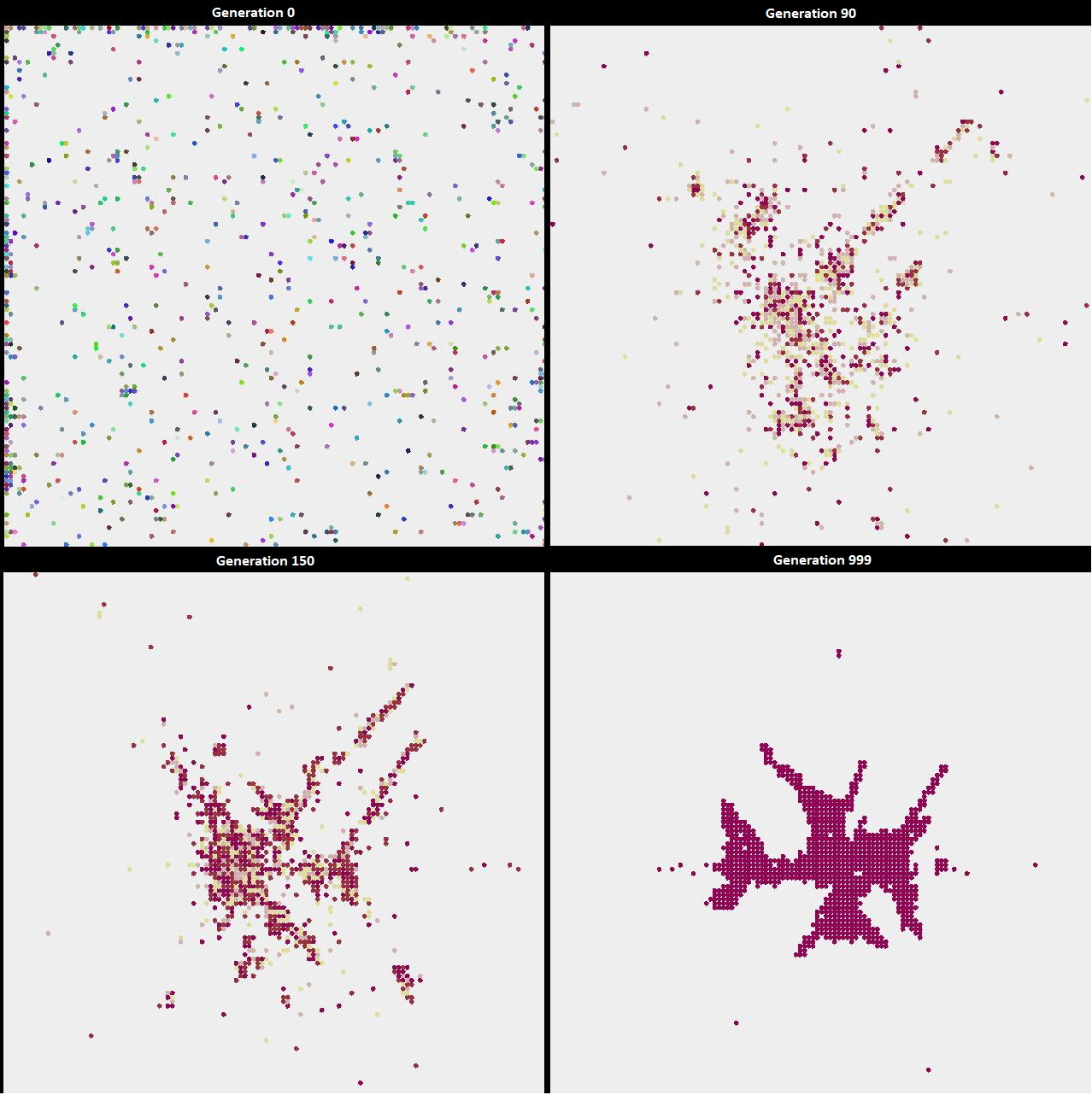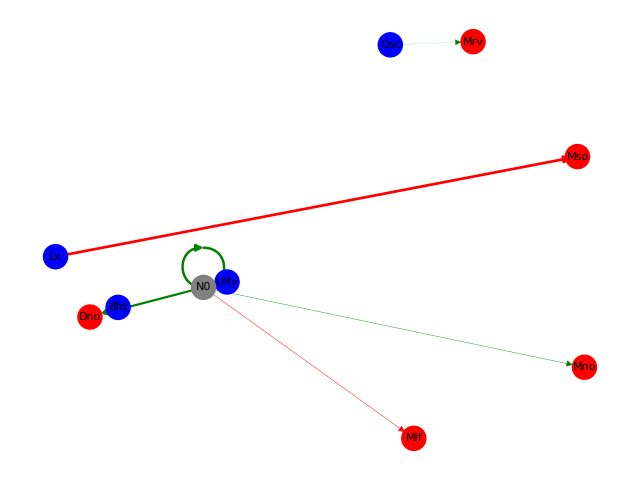Inspiration: https://github.com/davidrmiller/biosim4
This project is the product of 2 completely random events that happened at the same time. I needed some practice with Java, and the YouTube algorithm found the absolutely brilliant video from David R. Miller named "I programmed some creatures. They evolved." (https://www.youtube.com/watch?v=N3tRFayqVtk).
This is not a 'serious' project. I wanted to retro-engineer David's creation just for fun and practice. There might be updates along the way, as long as it continues to amaze and entertain me!
Agent
All beings in the simulation are instances of the class Agent. They can move in 4 directions in the world grid. Instances of classes inheriting the Sensor interface collect data on the agent's current surroundings in the world grid. An Action will be executed by an agent at each step of a generation. At the end of each generation, the remaining agents who survived the selection reproduce to fill the world quota for the next generation.
Neuron
Basic implementation of a perceptron. There are 3 types of neurons, either sensory, action or hidden.
Brain
Multiple instances of the Neuron Class, organised in layers. First layer will always be all sensory neurons, and last layer all action neurons. Every connection between neurons is randomly generated at the agent's creation. The function think defines the process where given its Sensors inputs, the brain outputs an Action. This action corresponds to the highest activated action neuron in the brain (hard voting, no probabilities involved).
Genome
The genome is a combination of hexadecimal sequences. Each 24 bits sequence corresponds to an encoded connection of the agent's brain. 8 bits are used to determine the initiator of the connection, 8 bits for the receiver, and 8 bits for the weight of the connection. Genome diversity can be observed during the simulation with the agents colors. Similar colors corresponds to closely similar genomes.
Grid
UI was really not the focus here. It is a very simple grid where each cell can be occupied only by one agent at a time.
Selection criteria
The selection criteria are the rules that determine which agents get to reproduce and those who do not. In this version they are essentially "spatial", meaning that agents will survive and reproduce to the next generation only if they end up in specific zones of the grid. Three criteria are operational : right-side, center and corners of the grid.
World
Defines a single simulation run : grid dimensions, number of generations, number of steps per generation, the selection criteria and the mutation rate.
No friendly UI for parametrisation, parameters are passed directly in the main script.
Simulation 1
Selection Criteria : right half side of the grid.
World world = new World(128, 128, 1000, 8, 1, 1, 500, 100, criteria, 0.001);
world.live();
Simulation 2
Selection Criteria : circle at the center of the grid.
World world = new World(128, 128, 1000, 128, 4, 4, 1000, 150, criteria, 0.01);
world.live();
Simulation 3
Selection Criteria : squares at the corners of the grid.
World world = new World(128, 128, 1000, 128, 4, 4, 500, 250, criteria, 0.01);
world.live();
A bit of python code to visualise the most common brain type that resulted at the end of a simulation.
A simple brain example resulting from the simulation n°1.
A more complex brain example resulting from the simulation n°3.




